
|
|
|
|
|
|
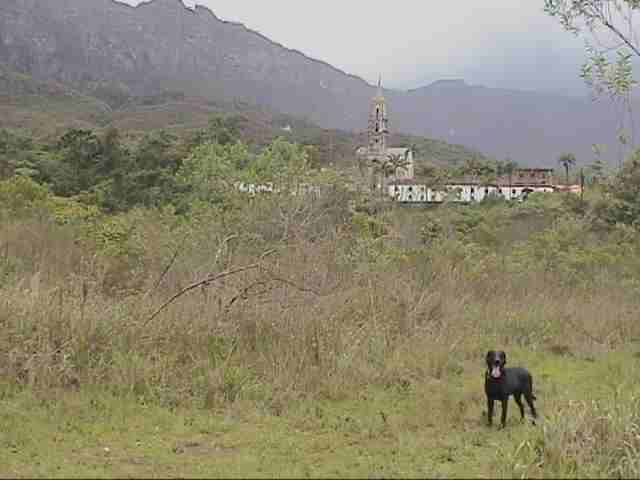
|
"Its possible to see the monastery from the distance." |
According to the pioneers, a passage of Serra do Espinhaço (Backbone Chain of Mountains) has the profile of a big face, the "Caraça."(big face) Parque do Caraça (CAraça Park), as it is known, is considered one of the main tourist attractions of Catas Altas.
Caraça is 120 kilometers from Belo Horizonte and 26 kilometers from the headquarters of CAtas Altas, by asphalted road and 5,5 km in straight line, intercepted by Catas Altas Mountains peak and CArapuça peak.
In 1821, Colégio Caraça opened, under the direction of the lazarist's priests. In 1968, a fire interrupted the history of the school, on the eve of its 150 years. The fire destroyed classrooms, the library and the theater. Several restorations were promoted in the second half of the eighties.
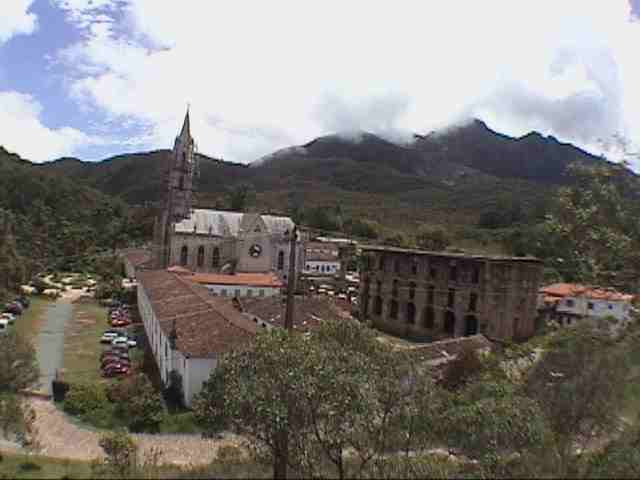
|
"The monastery." |
Cachoeira Cascaton (Waterfall Cascatona) - it has, approximately, 80 meters of height, in unevenness. It is located in Ribeirão Caraça (Caraça Stream), six kilometers from the School. The difficulty level of the walk varies from medium the heavy. It is allowed to swim at the place.
Cachoeira Cascatinha (Cascade Waterfall) - Two kilometers distant from the School, whose course is usually accomplished in 20 minutes, after crossing forest areas and fields. It is allowedto swim there.
Cachoeira Taboões (Waterfall Taboões) - it is four kilometers from Cachoeira do santuário do Caraça (Caraça Shrine Waterfall) and can be reached by bicycle. It's a 10 minute walk. In the bifurcation of the trail, the right takes you to Taboões de cima (high Taboões) and the left takes you to Taboões de baixo (Low Taboões), where the river Caraça meets the stream Taboões.
Prainha - it is only 500 meters, approximately, from the School, and stream Caraça passes there.
Tanque Grande (Big Sink) - It has 400 meters in length and approximately for 100 meters of width. It is 15 minutes of walk, starting from the School, by a wide, flat and shaded trail. It is an artificial lake built for electric power generation.
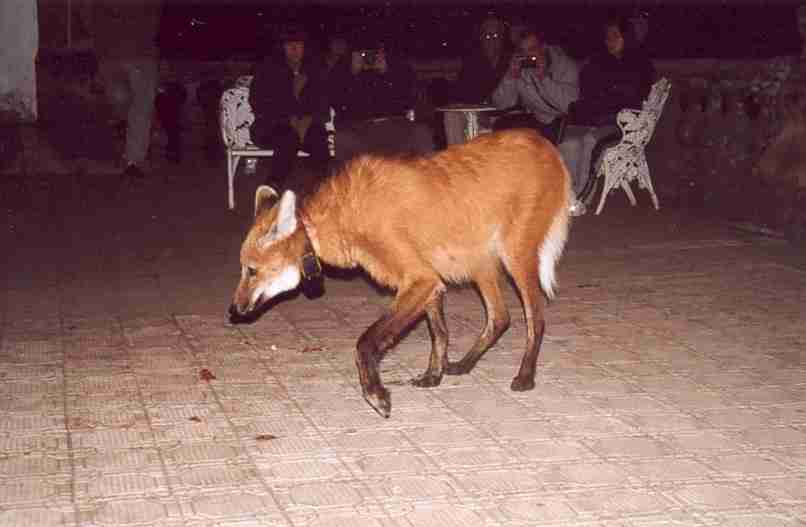
|
"The Guará wolves come every night to the monastery to eat." |
Banho do Belchior (Bath of Belchior) - Passage of the Stream Canjerana. In its course it goes by a place denominated pine trees, the best point to visualize the profile of the caraça (lying giant) formed by the mountains.
Piscina Natural (Natural swimming pool) - it has 20 meters in length for 10 of width and 1,40 meter of depth, it is two kilometers far from the School and the access is by signaled trail. In the place, there are two kiosks and three barbecue grills.
Cruzeiro - One kilometer from the School, what corresponds to 20 minutes of walk by an easy access for signaled trail. . Excellent point to photograph the place.
Lookout- The access to the Lookout, that is 500 meters away from the natural swimming pool, is made by a pleasant walk in a signaled trail. From its top, you have a beautiful view of the architectural group of Caraça, of the mountains and peaks.
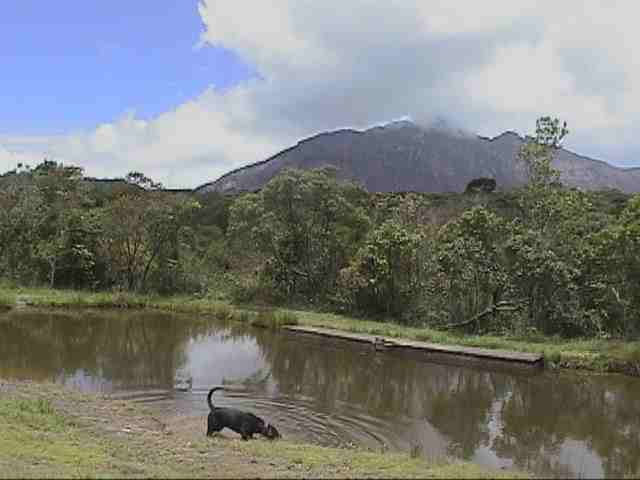
|
"I'm gonna drink some water." |
Cachoeira do Campo Grande (Waterfall Campo Grande) - it is eight kilometers from the School. The access to the place is difficult, being necessary a local guide.
Cachoeira da Bocaina (Bocaina Waterfall) - it is five kilometers from the School, located between Pico do Sol and Pico do Inficcionado (Sun and Inficcionado peaks). The trail crosses areas of forests and fields.
Campo de Fora (Outer Field) - it is about nine kilometers from the School, with a course without great difficulties. It crosses great forest extensions and fields. There are waterfalls. About two hours of walk to arrive to the place.
Pico Alto do Inficcionado (High Inficcionado Peak) - it has 2.070 meters of altitude, it is the second highest peak . There you find Gruta do Centenário (Centennial Cave). The trail is considered tough: it's eight kilometers starting from the School, which corresponds to six hours of difficult walk. In 1922, the priests of the Caraça School discovered on the Peak, close to the summit, the Centennial Cave. With almost 3,8 thousand meters of extension and 450 meters of depth, it is one of the deepest caves in quartzito of the world.
Pico do Sol (Peak of the Sun) - summit of the preservation area and of the Backbone Mountains: it's 2.070 meters of altitude. It is about 15 kilometers far from the School and the access presents high degree of difficulty. There is a natural swimming pools there, where it is allowed to swim.
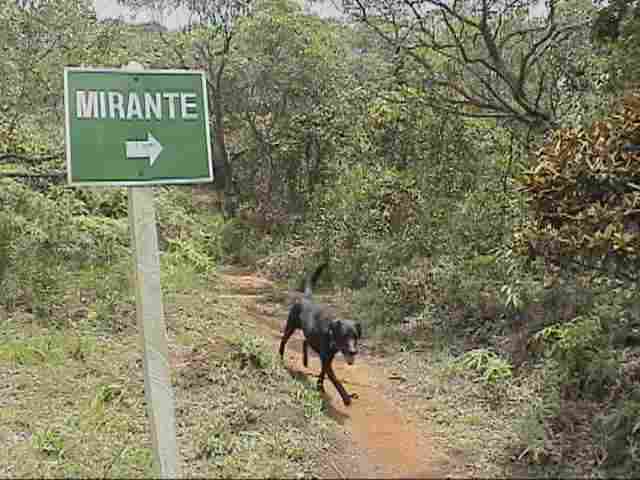
|
"The Lookout has an awesome view." |
Gigante do Caraça (Caraça's Giant) - with approximately 2.000 meters of height, it is 12 kilometers from the School. It is the place where is drawn in the mountain a form, similar to a big face (Caraça), origin of the name of the park. The access is difficult and steep.
Pico da Carapuça (Pick of the Hood) - also in the high of Caraça Mountains, from where one can have a beautiful view of the park. It's 1.912 meters of altitude, five kilometers or three hours of walk from the School. On the road to the peak, one can visit Lourdes and Chapel caves.
Pico da Canjerana (Canjerana Peak) - it is ten kilometers from the School or five hours of walk. To go to the place it is necessary guide's attendance, because the trails are not signaled. Its higher point has 1.890 meters of altitude.
Pico da Verruguinha (Peak of the Wart) - it has1.650 meters of altitude and it is seven kilometers from the School. The walk is quite difficult, being necessary guide attendance.
Gruta do Padre Caio (Father Caio Cave) - also called Gruta de Lourdes (Cave Lourdes). It is an hour from the School, by a medium difficulty level trail due to the long ascent passage.
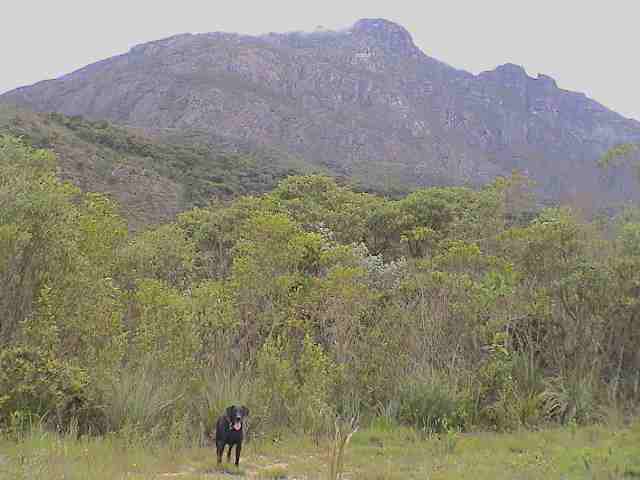
|
"This is Serra do Espinhaço (Backbone Mountains)." |
Capelinha (Chapel) - ruins of Capela do Sagrado Coração de Jesus (Chapel of Jesus' Sacred Heart) (1866), that can be seen from the Shrine. The place is excellent to visualize the whole chain of mountains that surrounds the Shrine with the main peaks.
Banho Imperador (Emperor's Bath) - it is to the margin of the asphalted road, close to the bridge over river Caraça, distant approximately 100 meters from the Shrine. It has barbecue grill, tables, banks and bathrooms. It is possible to swim there.
Colégio do Caraça (Caraça School) - Brother Lourenço de Nosaa Senhora, a potuguese of unkown origin, founded, in 1774, a small chapel and a convent in Caraça. In 1968, a fire destroyed the building of three floors, the theater and the library. The church and their lines stayed intact.
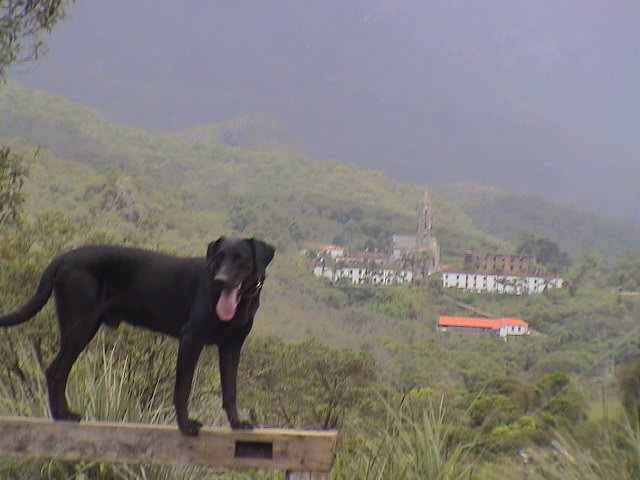
|
"Bye! " |
Museu do Caraça (Caraça Museum) - it has more than 200 years and it was the room where the founder of Caraça, brother Lourenço, lived and died . After the fire, in 1968, the chapel was changed into a museum, where one can find several objects that belonged to the priests and students of the School.
Claustro (Monastery) - it is at the internal patio, amid the garden. In its center, there is a sundial. Because of the roofs, it is only possible to see the hours between 9 and 16 o'clock. The clock is considered to 200 years old.
Catacumbas (Catacombs) - By the Monastery, you arrive to the catacombs of the Shrine, place where the priests of the School were buried.
Igreja Nossa Senhora Mãe dos Homens (Holy Mother of Men Church) - the church was built in neogothic style and inaugurated in 1883.
|
Tips by GUSTAVO VIVACQUA |
|
1. Every the Guará wolf comes from the bushes to eat from the priest's hand. It is awesome! A rare opportunity to observe a Guará wolf really close. 2. A good suggestion of lodging the monastery itself. Besides being the best located place, you have to take advantage for the chance of being in a place like this. 3. There is a lot of attractions and you'll have to walk many kilometers. 4. The monastery has infrastructure to receive the tourists, with restaurant, bar and lodging. 5. You have to pay approximately R$10,00 per car to enter the park. 6. Avoid visiting the place during the holydays. The place is 10 times more beautiful. 7. Bring coats. Even in the summer it is cold. From May to August there are frosts and thick fog. 8. The attractions are in a 20 km radius area. Take something to eat and to drink to the walks, because you won't return in time for lunch. 9. If you want to enjoy some old books, the monastery has a collection of 250 books of the 16th century. 10. The best months for walkings are between May and September. |
CLICK HERE to send your tip
CLICK HERE TO SEE OTHER BRAZILIAN DESTINATIONS